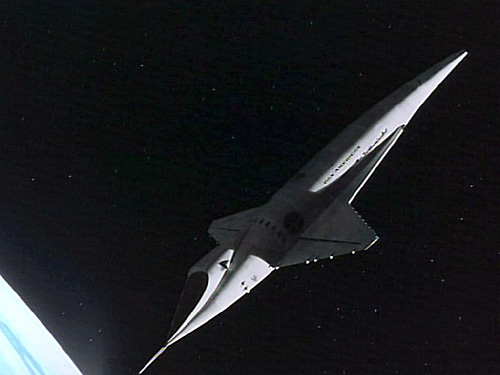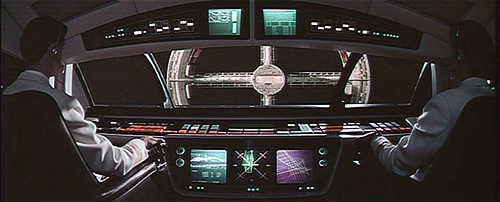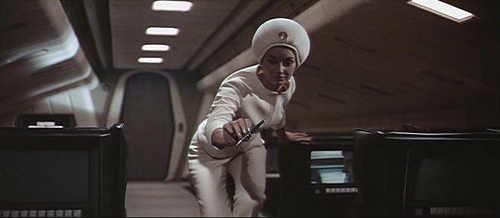
The “space plane”, arguably one of the most instantly recognizable spaceships of science fiction, the Orion Shuttle was an amazing projection into the future, and a fairly accurate prediction of the US Space Transportation System (shuttle program). Although the initial booster system was never shown in the film, the Orion was a re-usable orbiter that conducted its mission as a passenger and supply ship to the station – just like the NASA space shuttles – and landed back on Earth like any conventional jet would land.

The cockpit of the Orion Shuttle resembled a contemporary jet airliner. Unusual for the time was its portrayal of automated control systems. In a memorable sequence in the film, the shuttle nears the orbiting international space station. in order to successfully dock, it has to match the station’s movements exactly. Onboard computer systems match the rotation of the station, align the shuttle with its landing bay, and guide it in. Today, this sort of computerized control is ordinary, but when the film was released it was an extremely novel idea. At the time, the public distrusted computers in general; the incomprehensibility their operation made it difficult for audience members to regard them as tools. The concept of having a shuttle primarily flown by them was both fascinating and frightening at the same time. As we enter the 21st Century, of course, such systems are commonplace.

As with other moments throughout the film, the Orion sequence also illustrated the varying problems flight crews of the future would face, including weightlessness, yet treated it as nothing particularly novel. The stewardess is forced to move carefully through the cabin with “grip boots” that keep her fixed on the walkway. Added to her responsibilities are ensuring that floating objects are secured so they don’t become missiles once the shuttle begins slowing or enters into a gravity zone.